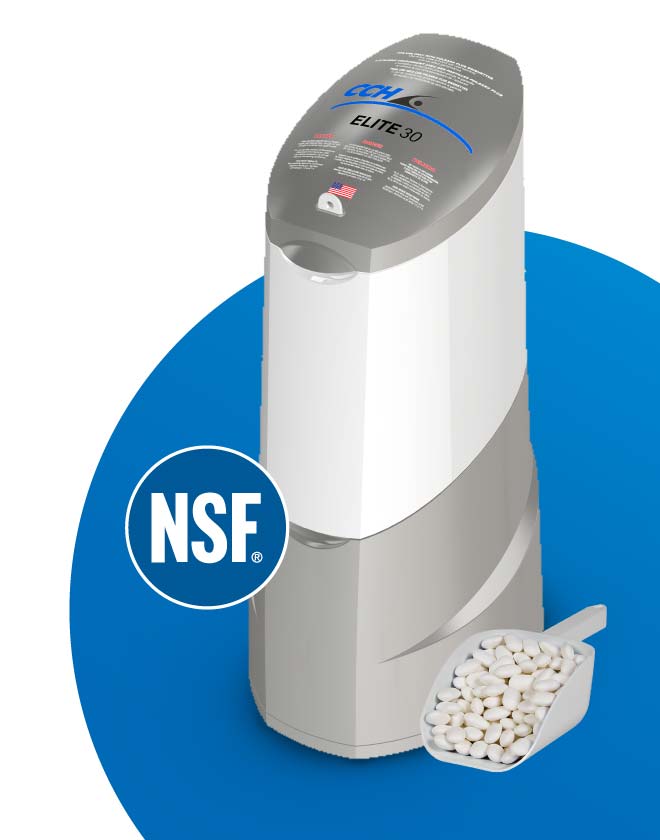Clearing Up the Facts About Cal Hypo
There are several options for you to choose from when it comes to pool sanitation, and many combinations of chemicals work perfectly well. Considering your limited time and budget, wouldn’t it make the most sense to find a solution that more safely and efficiently combines these chemical solutions?
Calcium Hypochlorite (Cal Hypo) not only keeps your water looking clearer for longer, but it lowers the overall cost of pool ownership, will free up more of your time and keeps your end-users and staff safer in the process.
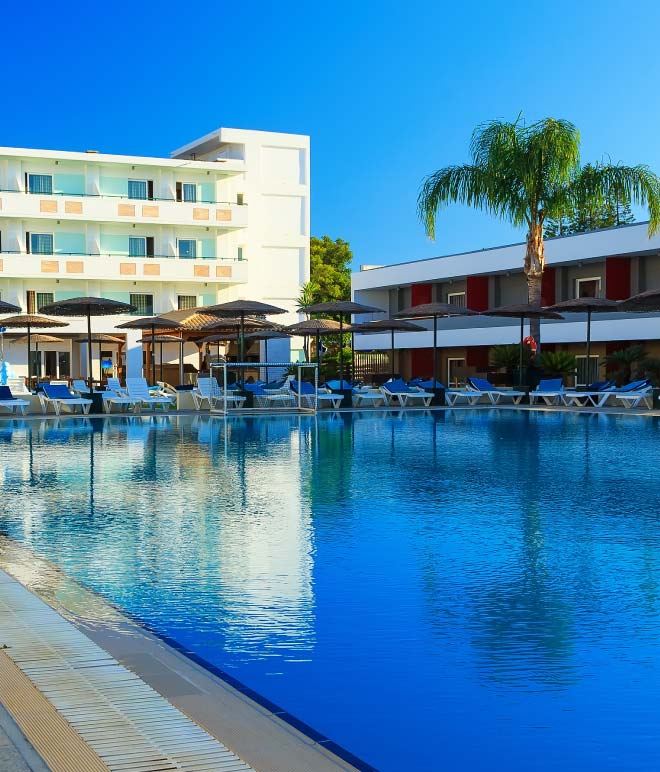
Calcium and Pool Water
Cal Hypo is a calcium salt that contains hypochlorite. In other words, it’s a dry form of chlorine that’s used as a disinfecting agent in pool water but is largely composed of calcium.
Some operators may be recoiling at the thought of a calcium-forward sanitizing agent, but Cal Hypo is considered safer than the most common method of pool water sanitation, Sodium Hypochlorite (also commonly known as “Liquid Bleach”).
No matter what kind of sanitizer you use, calcium plays an important role in stabilizing pool water. But as with most chemicals, incorrect levels will lead to negative outcomes — ones that could be avoided by using Cal Hypo.
Let’s take a closer look at how calcium interacts with the other aspects of balanced pool water and help cool some of the concerns that surround it.
The Langelier Saturation Index (LSI)
One measuring stick for pool water balance is what’s known as the Langelier Saturation Index (LSI), a formula that determines if pool water is either in balance, corrosive, or scale forming. And it’s been used in the pool industry for years now.
Calcium hardness is just one of the five factors that make up this index. The formula for this index can be simplified as follows:
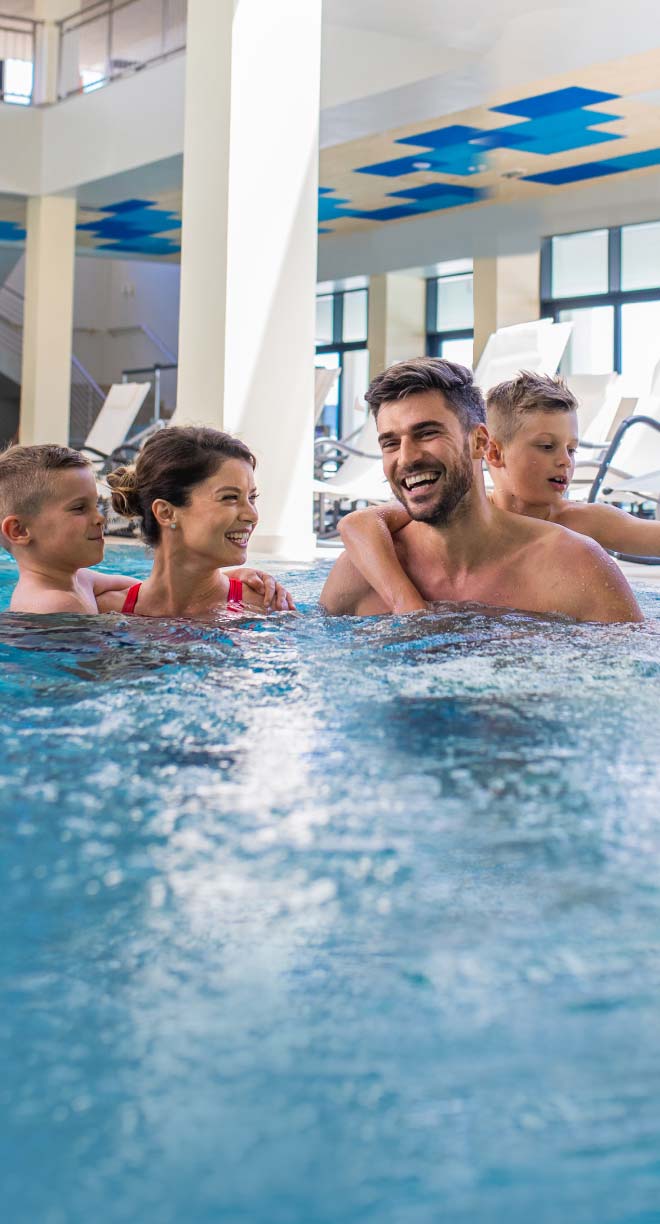

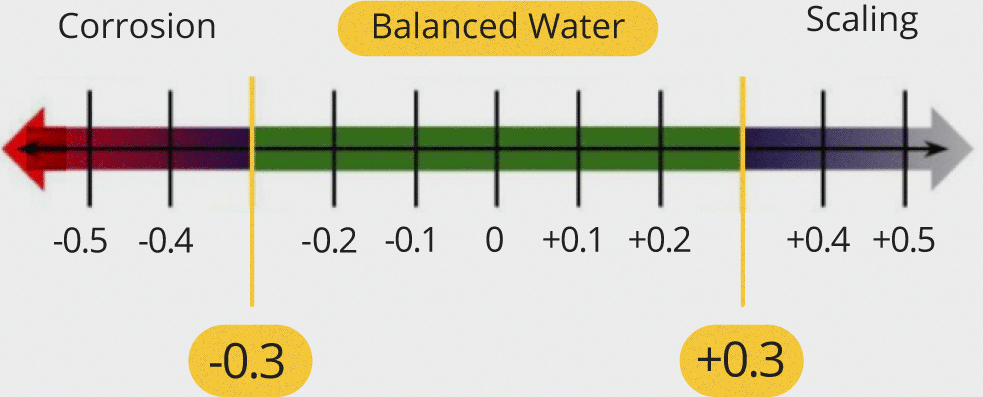
A score of anywhere from -0.3 to +0.3 is considered balanced, but ideal water should be between 0.0 to +0.3. For reasons we won’t get into here, Total Dissolved Solids (TDS) will be a constant at 12.1.
Traditionally, the alkalinity of pool water has been controlled by liquid bleach, and the varying levels of that agent would get the water to the desired LSI. But alkalinity is not the only way to find the 0.0 to +0.3 range.
Let’s take a look at a couple of examples.
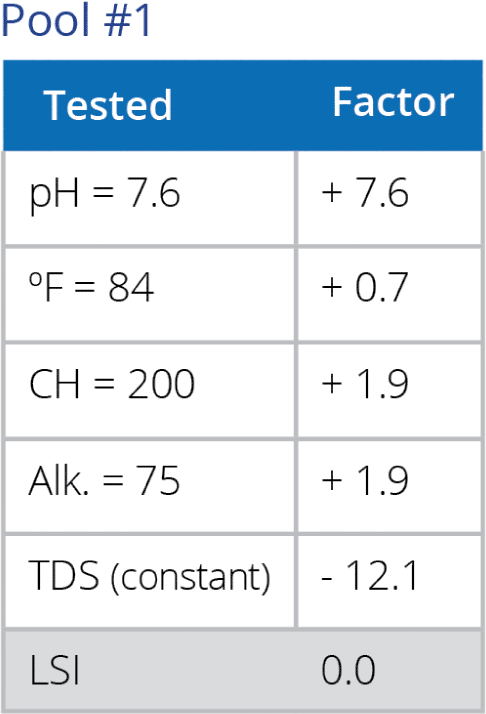
Perfectly balanced water! Well done.

Note the calcium softness and increase in alkalinity. Still perfectly balanced, but high alkalinity may cause a rise in pH, and low calcium content may cause corrosion.
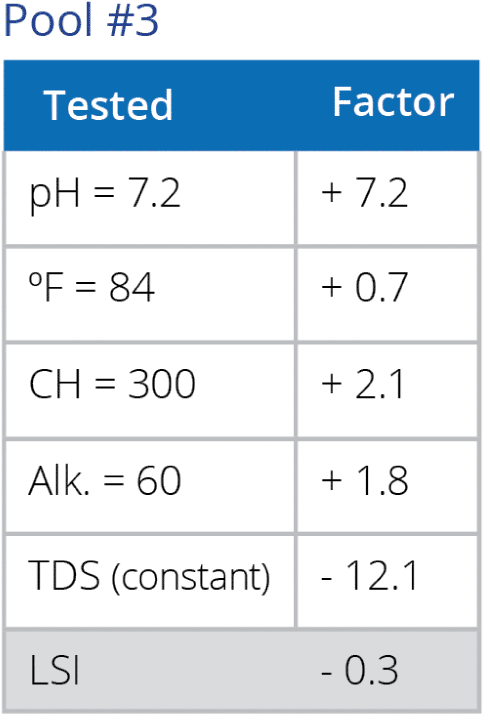
Water is still in the balanced range, but what happens in the winter when the temperature drops? Our LSI will fall with it.
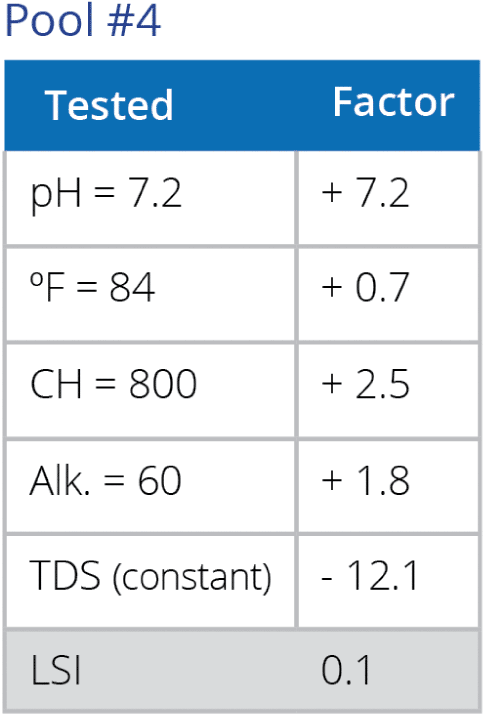
We have well-balanced water with room to spare, considering the Model Aquatic Health Code accepts calcium hardness levels up to 2,500 ppm.
Cal Hypo vs Bleach
Cal Hypo is not only safer for operators and swimmers than liquid bleach, but Cal Hypo tablets are more cost effective over time; easier to ship, handle and store; and make the chlorination process much simpler and more time efficient.
The 3-in-1 Multifunctional Cal Hypo Tablet
Whether you use bleach or Cal Hypo to reach the desired LSI score, both will require the addition of cyanuric acid to properly maintain pH levels. In fact, bleach requires 2.5x more acid than Cal Hypo does to neutralize and maintain the proper pH levels.
Bleach alone also requires additional calcium to prevent water softness and corrosion.
For bleach users keeping track at home, that’s three separate chemicals that you need to purchase, transport, store, handle and measure.
On the other hand, one Cal Hypo tablet provides your pool water with calcium, sanitation through chlorine, and a buffer against pH change in alkalinity.
Get What You Pay For
When compared to liquid bleach, Cal Hypo sanitizers have about 5–6 times more killing potential when it comes to controlling algae and bacteria and removing organic contaminants. It’s simply a more potent solution; Cal Hypo has a chlorine concentration of 68–78%, whereas liquid bleach has a concentration of about 12%.
Sustainability and Storage
Cal Hypo comes in small, solid-state tablets that are lighter weight than the mostly-water bleach alternatives. That means a more sustainably shipped product and a much easier task for storage. Liquid bleach, often only available in large drums, requires about six times more storage space to store the same amount of available chlorine as Cal Hypo sanitizers.
Dry-form chlorine loses only 3% of its available chlorine concentration in one year. Liquid bleach is prone to losing as much as 33% of its strength in a single month, and that decomposition rate increases in warmer temperatures.
Safety
Compared to Cal Hypo, handling liquid bleach is a messy task, and if spilled can be harmful to flooring, metal components and equipment. Not to mention the hazard it poses to any person who makes direct contact with the chemical.

Using Cal Hypo with the CCH® Elite 30
The CCH® Elite 30 Feed System is the only system with which Cal Hypo tablets are compatible. While that might sound limiting at first, the Elite 30 boasts several features that will decrease ownership and operating costs of your pool even further.
The Automatic Solution
The automatic chlorination feeding system ensures that your pool gets the right amount at the right time. The 3-in-1 Cal Hypo tablets also ensure that calcium hardness and alkalinity are kept in check without the need to purchase additional chemicals.
Built-In Failsafes
Emergency shut-off valves prevent any overdosages or undue chemicals from getting mixed into the pool. Operators will appreciate the flooding prevention measures that make loading and maintenance easier and safer.
Free Up Your Time
These features don’t just mean a greater sparkle or safer pool water, but they also result in less work for you and your staff. As our customer testimonials will show you, the CCH® Elite 30 has operators raving over low-maintenance features. Some operators are going months without needing to clean the feeder. No measuring, no mess — just load the feeder and the CCH® Elite 30 takes care of the rest.
Calcium in pools is a necessary component to safer pool water, and compared to liquid bleach is the safer choice for routine sanitation. Cal Hypo and the Elite 30 Feeder System provide a clearer, cleaner, and safer swimming experience for your guests. The combination of the two lowers the total cost of pool ownership and will ultimately make pool sanitation more worry-free.
